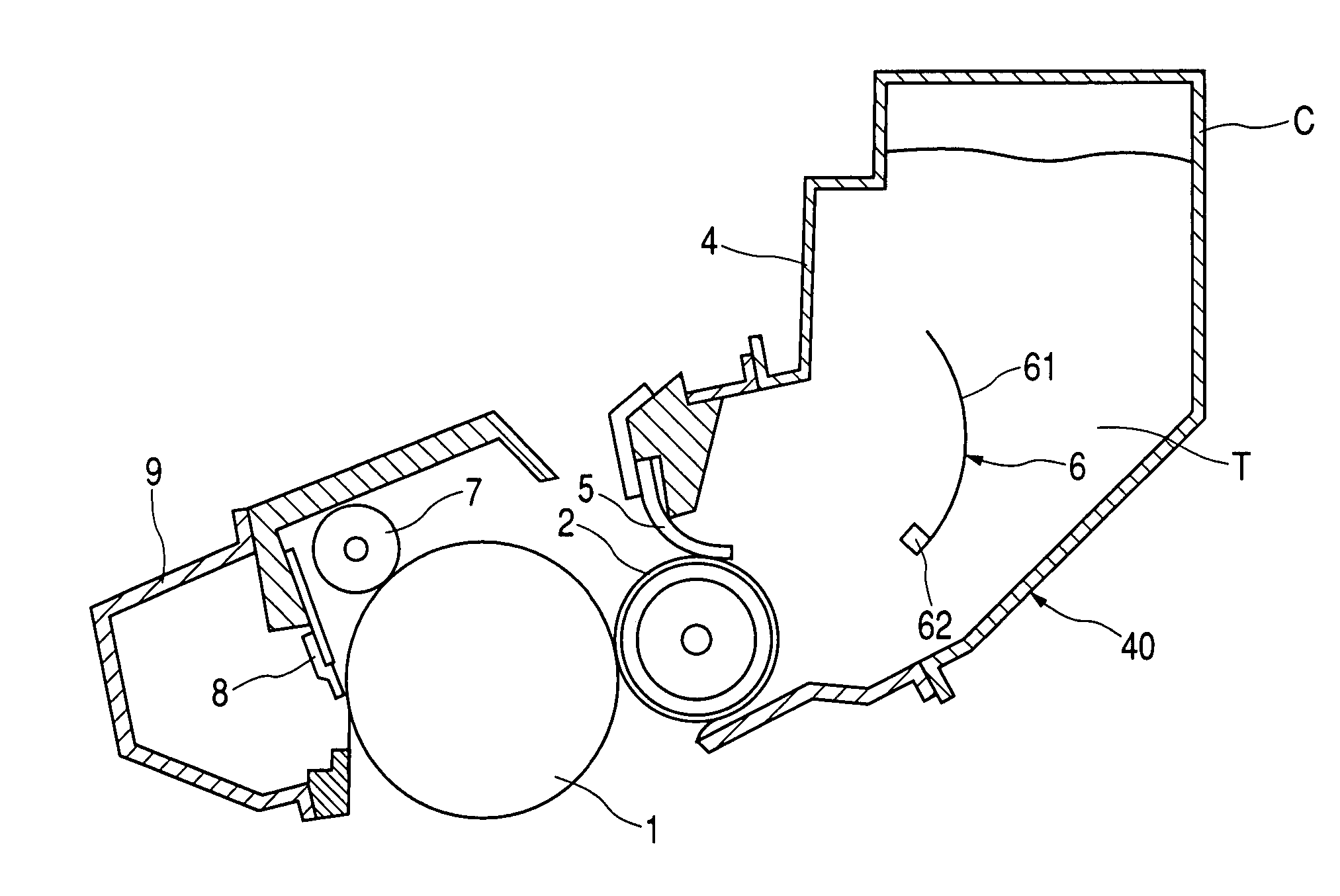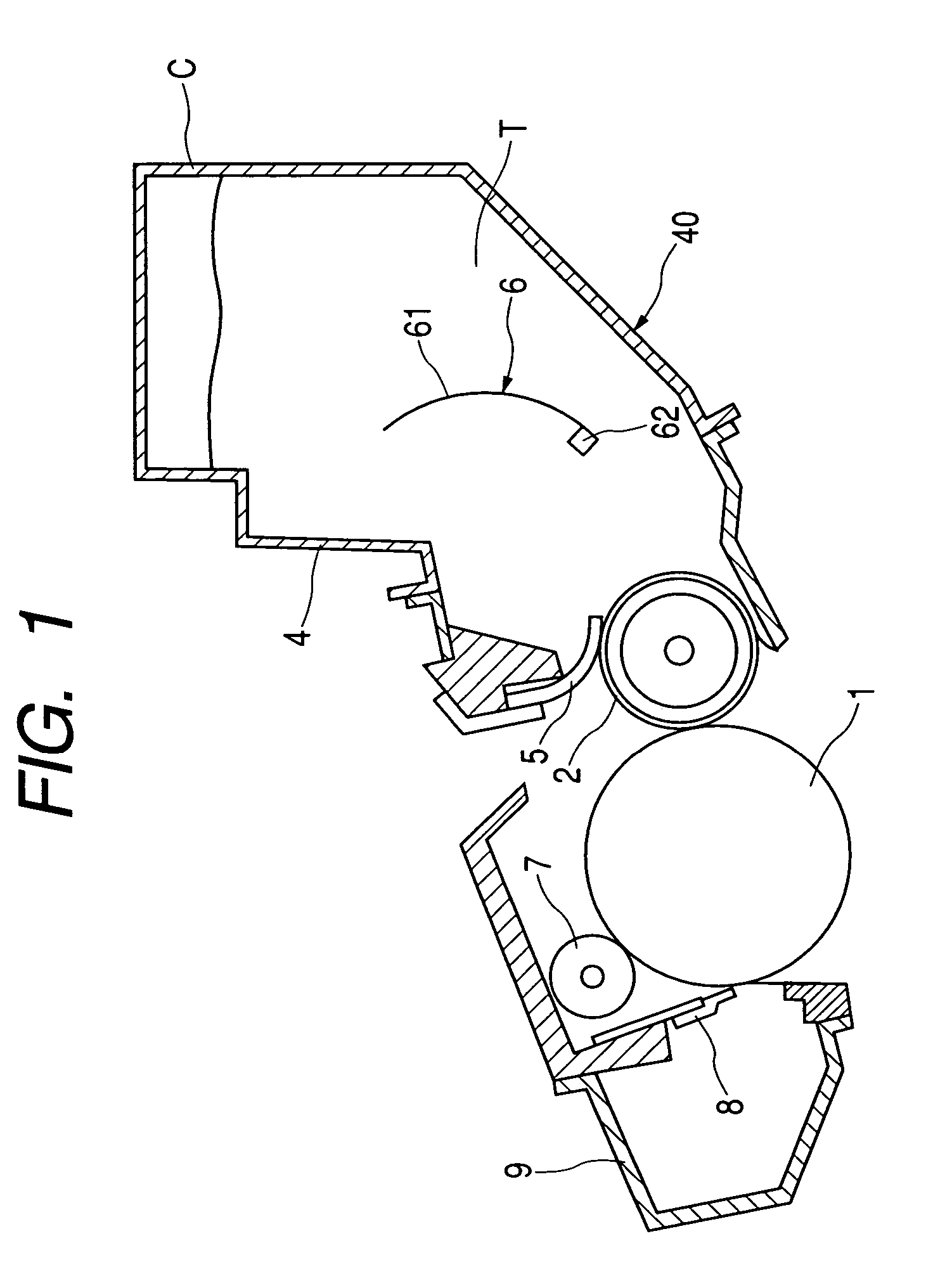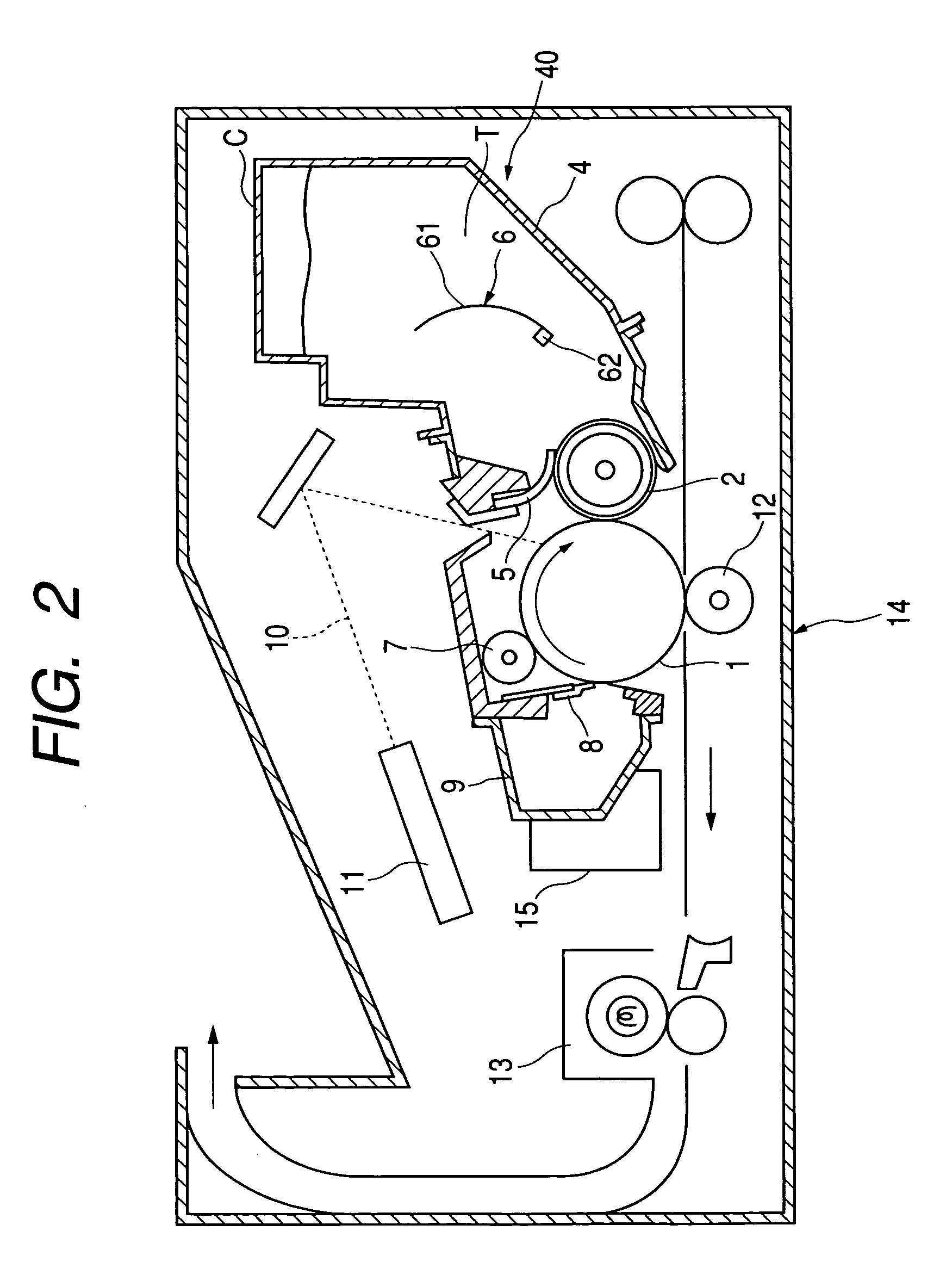Developing apparatus including agitating member
a technology of developing apparatus and agitating member, which is applied in the direction of developers, electrographic process apparatus, instruments, etc., can solve the problems of deterioration of the flowability of the toner, image failure, and high hygroscopic property, and achieve the effect of superior low-temperature fixing property
- Summary
- Abstract
- Description
- Claims
- Application Information
AI Technical Summary
Benefits of technology
Problems solved by technology
Method used
Image
Examples
first experiment
[0072]With this arrangement, in the environment at a low temperature and low humidity (15° C. and 10%) and in the environment at a high temperature and high humidity (30° C. and 80%), continuous printing was performed for an image pattern having the coverage rate of 2%. In any environment, the stable toner electrification amount was maintained during printing of about 200,000 sheets since the process cartridge C was initially used until the toner was exhausted, and satisfactory images could be obtained without reduction of the image density and image failures such as fogging and fading.
[0073]In an environment at a low temperature and low humidity and in an environment at a high temperature and high humidity, the amount q (μC / g) of charged toner carried by the developing roller 2 was measured by a 6514 electrometer by Casley Co., Ltd. using an aspiration method. The measurement results are shown in FIGS. 5 and 6, respectively. It is understood that, in either environment, near the va...
second embodiment
[0111]An image forming apparatus and toner used for a second embodiment are the same as those for the first embodiment.
[0112]As is shown in FIG. 7, a developing apparatus 40 according to the second embodiment has a feature that a larger amount of toner is stored and a plurality of agitating members 6a and 6b are provided for a toner container 4.
[0113]With this arrangement, the own weight of the toner can be dispersed, and the circulation of the toner in the toner container 4 can be increased. Therefore, the capacity of a process cartridge C can be more increased.
[0114]This embodiment is the same as the first embodiment, except in that the amount of loaded toner is 1500 (g), the rotation speed c of the agitating member 6a closer to a developing roller 2 is 0.525 (rps), and the rotation speed e of the agitating member 6b farther from the developing roller 2 is 0.25 (rps).
[0115]The rotation radii of the agitating members 6a and 6b are 40 mm, and as is shown in FIG. 4, these agitating m...
PUM
 Login to View More
Login to View More Abstract
Description
Claims
Application Information
 Login to View More
Login to View More - R&D
- Intellectual Property
- Life Sciences
- Materials
- Tech Scout
- Unparalleled Data Quality
- Higher Quality Content
- 60% Fewer Hallucinations
Browse by: Latest US Patents, China's latest patents, Technical Efficacy Thesaurus, Application Domain, Technology Topic, Popular Technical Reports.
© 2025 PatSnap. All rights reserved.Legal|Privacy policy|Modern Slavery Act Transparency Statement|Sitemap|About US| Contact US: help@patsnap.com



